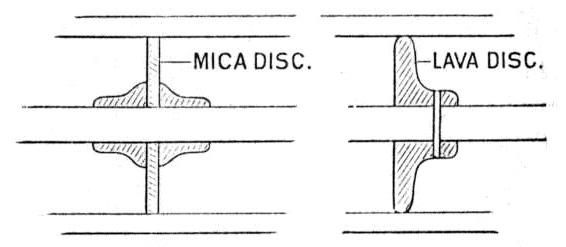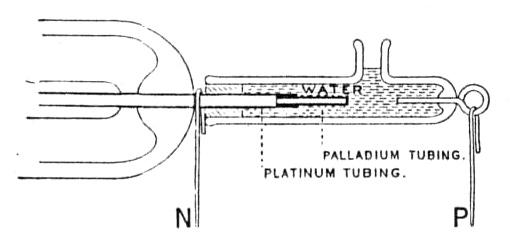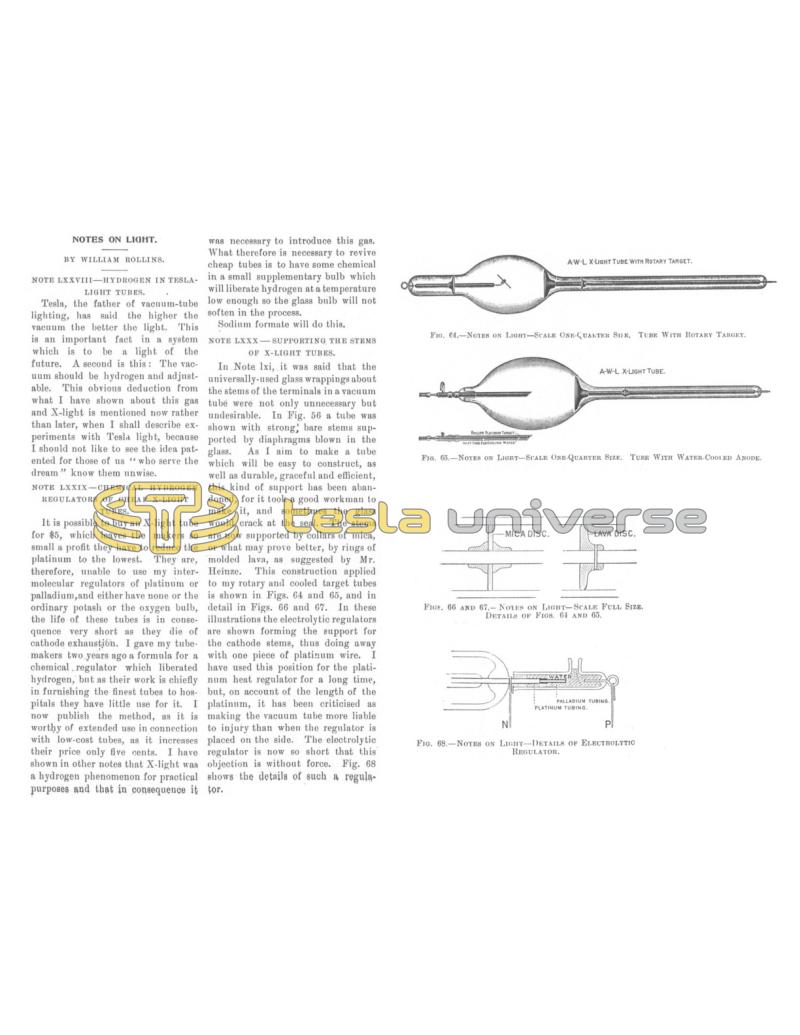
Nikola Tesla Articles
Nikola Tesla's Notes on Light
NOTE LXXVIII - HYDROGEN IN TESLA-LIGHT TUBES
Tesla, the father of vacuum-tube lighting, has said the higher the vacuum the better the light. This is an important fact in a system which is to be a light of the future. A second is this: The vacuum should be hydrogen and adjustable. This obvious deduction from what I have shown about this gas and X-light is mentioned now rather than later, when I shall describe experiments with Tesla light, because I should not like to see the idea patented for those of us “who serve the dream” know them unwise.
NOTE LXXIX - CHEMICAL HYDROGEN REGULATORS OF CHEAP X-LIGHT TUBES
It is possible to buy an X-light tube for $5, which leaves the makers so small a profit they have to reduce the platinum to the lowest. They are, therefore, unable to use my intermolecular regulators of platinum or palladium, and either have none or the ordinary potash or the oxygen bulb, the life of these tubes is in consequence very short as they die of cathode exhaustion. I gave my tube-makers two years ago a formula for a chemical regulator which liberated hydrogen, but as their work is chiefly in furnishing the finest tubes to hospitals they have little use for it. I now publish the method, as it is worthy of extended use in connection with low-cost tubes, as it increases their price only five cents. I have shown in other notes that X-light was a hydrogen phenomenon for practical purposes and that in consequence it was necessary to introduce this gas. What therefore is necessary to revive cheap tubes is to have some chemical in a small supplementary bulb which will liberate hydrogen at a temperature low enough so the glass bulb will not soften in the process.
Sodium formate will do this.
NOTE LXXX - SUPPORTING THE STEMS OF X-LIGHT TUBES
In Note lxi, it was said that the universally-used glass wrappings about the stems of the terminals in a vacuum tube were not only unnecessary but undesirable. In Fig. 56 a tube was shown with strong, bare stems supported by diaphragms blown in the glass. As I aim to make a tube which will be easy to construct, as well as durable, graceful and efficient, this kind of support has been abandoned, for it took a good workman to make it, and sometimes the glass would crack at the seal. The stems are now supported by collars of mica, or what may prove better, by rings of molded lava, as suggested by Mr. Heinze. This construction applied to my rotary and cooled target tubes is shown in Figs. 64 and 65, and in detail in Figs. 66 and 67. In these illustrations the electrolytic regulators are shown forming the support for the cathode stems, thus doing away with one piece of platinum wire. I have used this position for the platinum heat regulator for a long time, but, on account of the length of the platinum, it has been criticised as making the vacuum tube more liable to injury than when the regulator is placed on the side. The electrolytic regulator is now so short that this objection is without force. Fig. 68 shows the details of such a regulator.




